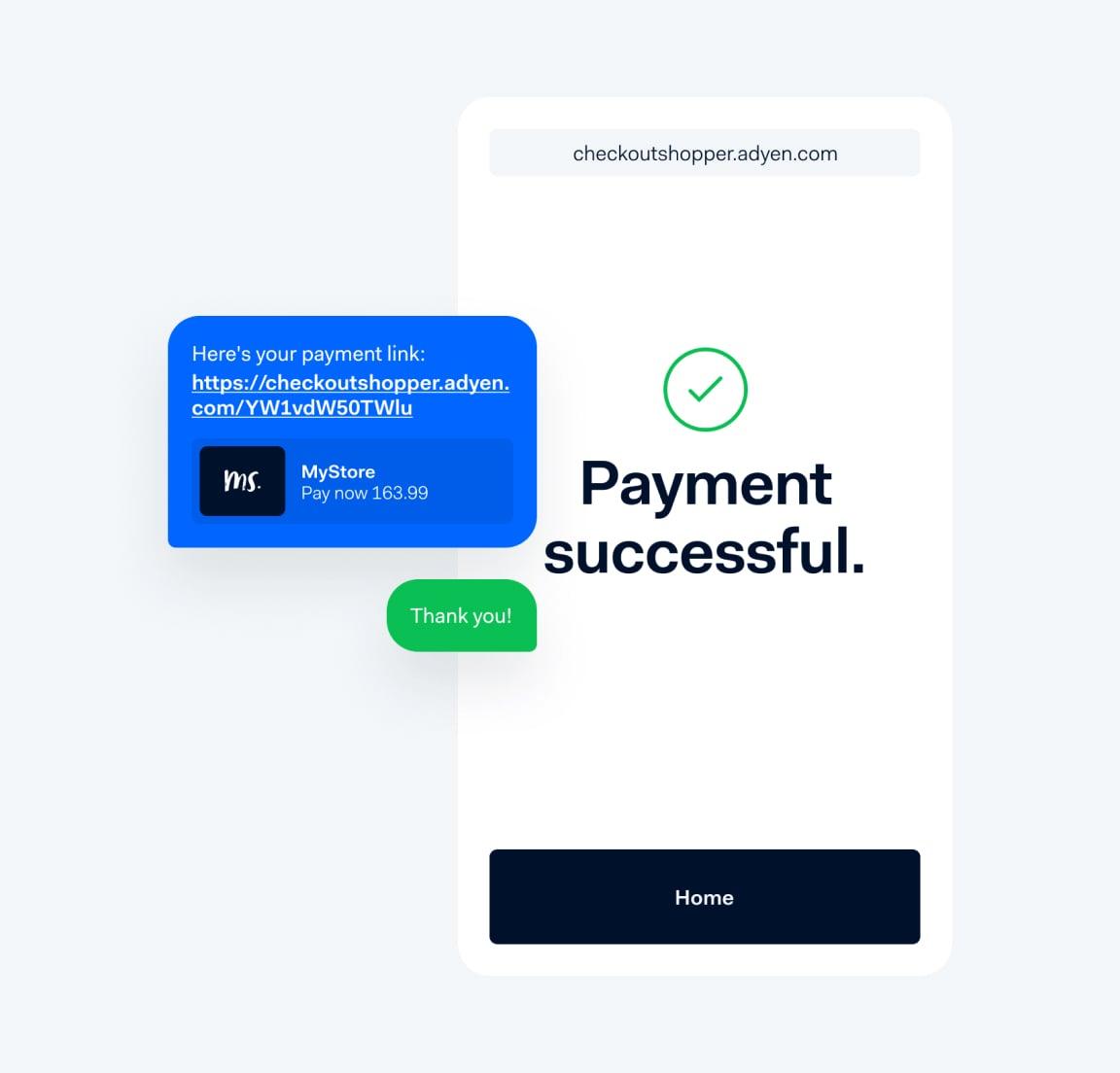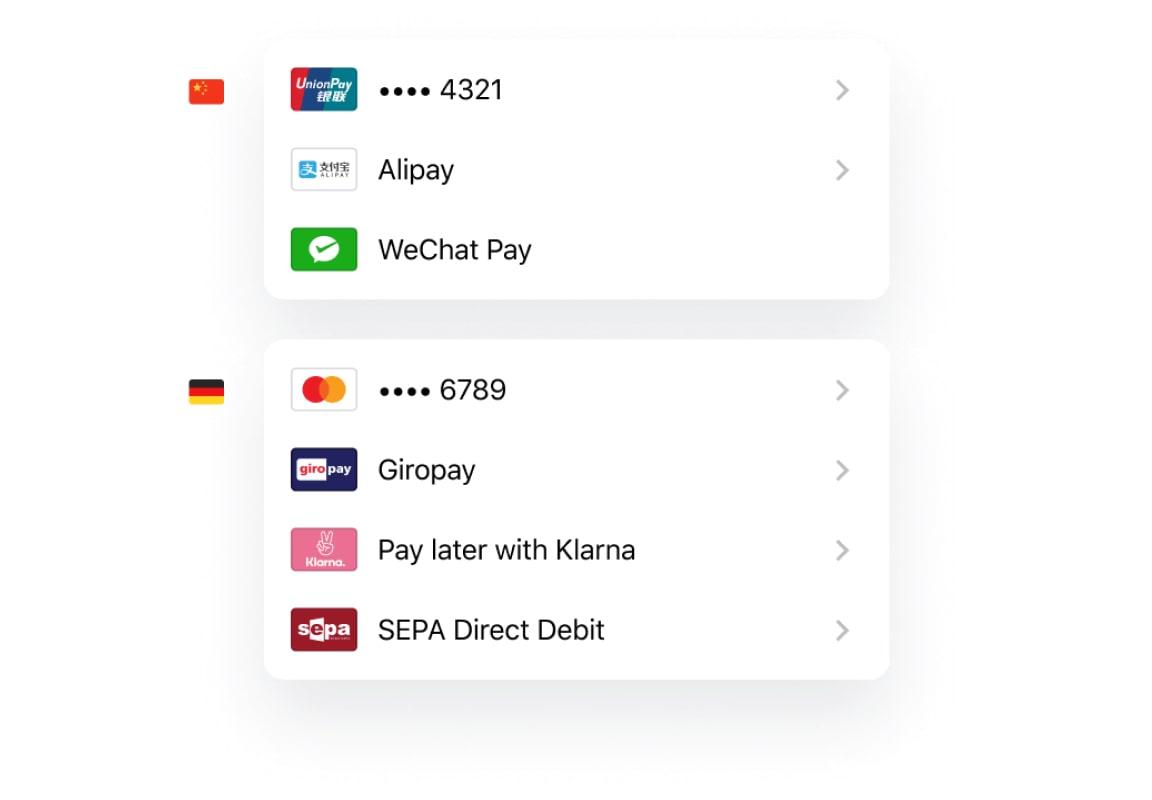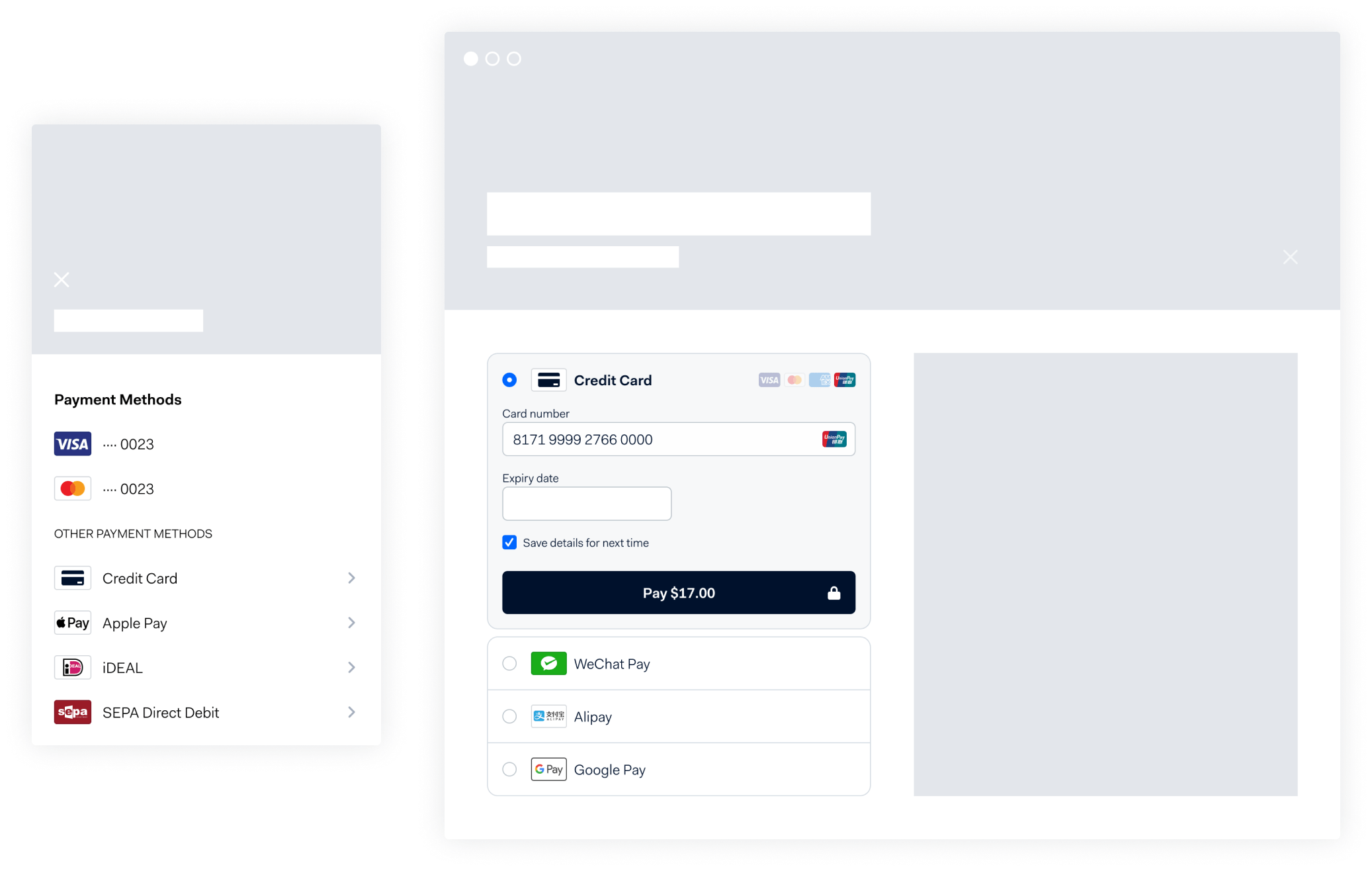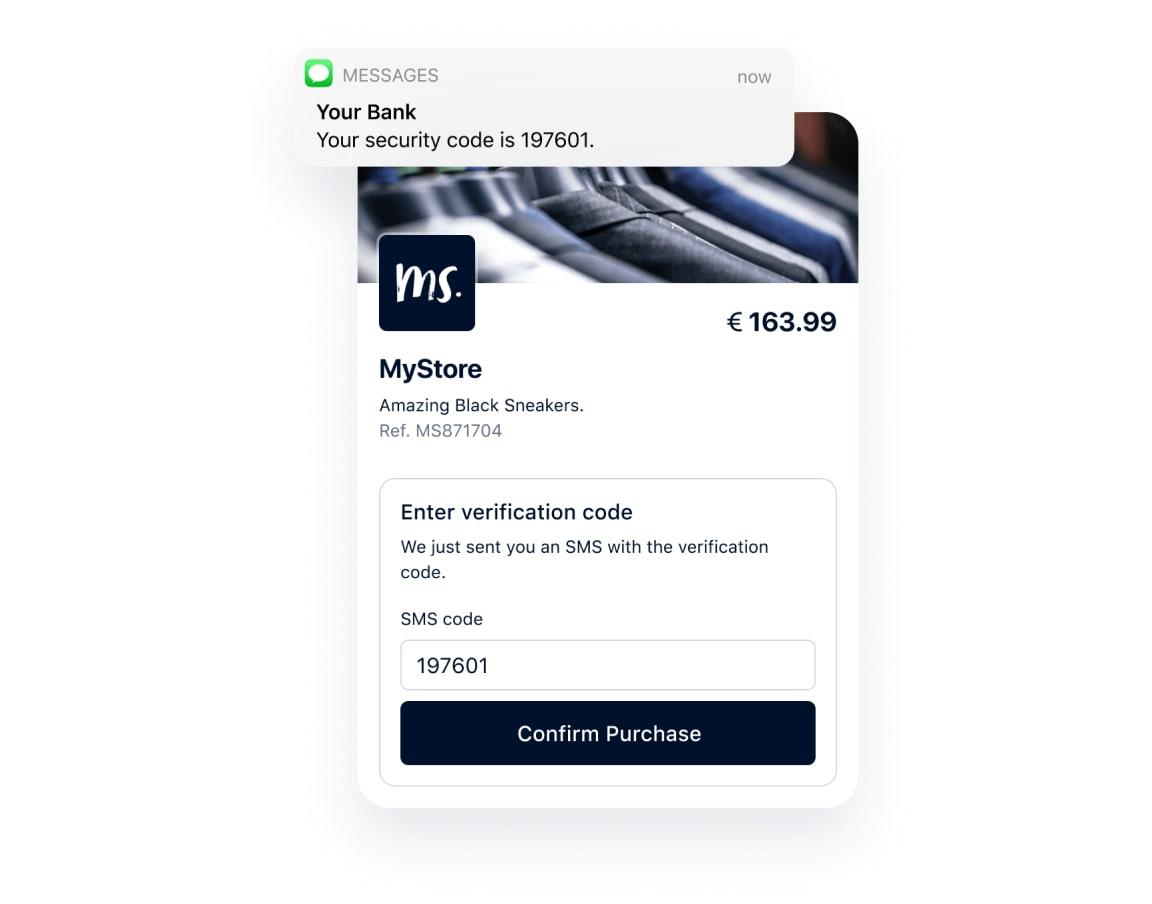Guides and reports
How to reduce shopping cart abandon rates
Easily reduce abandoned carts and increase your conversion rates with these five steps.

The way we buy has drastically changed, in a short period of time. We’re still learning the behavioral and decision-making processes of online shoppers. As a result of this fluid environment, the ubiquitous ‘abandoned cart’ is still one of the biggest headaches in ecommerce.
In the UK over 45% of shoppers have abandoned a purchase because of payment-related issues, equating to lost sales. This is something that can easily be fixed.
Your checkout is an opportunity to give customers what they want there and then. You've done the hard work, attracted them to your site and convinced them to hit the big button marked 'buy'. So let's not fall at the final hurdle.
Most of the time, cart abandonment is avoidable. By optimising your payments setup, you’ll increase your conversion rates, and boost your revenue with just a few adjustments. Below we’ll explore how to do this for your payment page in five easy steps.
Quick take away if you’re busy
What are abandoned carts?
Also known as: Shopping cart abandonment, abandoned baskets, abandoned cart.
Abandoned carts refers to visitors who add items to their online shopping cart, but exit without completing the purchase.
How to reduce abandoned carts?
- Redirect your checkout where relevant
- Let shoppers pay with different payment options
- Make sure your checkout works on different devices
- Add loyalty and more incentives for your shoppers
- Stay on top of your risk management setup
How can we help you and your business?
Our checkouts are optimised for every business setup, and we have all the integration options you need to increase conversions.
Step 1 - Redirect your checkout where relevant
The payment page user experience is the one thing standing between your customer and the moment of purchase gratification. So you need to make sure every payment experience is quick, easy, secure, and relevant for everyone. There are a few ways of creating this optimal payment page.
To go live quickly with a checkout, and if you have a variety of use cases including chatbots, social media, and telephone, you’ll want to go for aPay by Linkredirect. It’s easy to integrate and you can customise it to your brand's look and feel.

Use a payment link as a way to pay
Adyen Pay by Link
For more control, you can host the entire payment flow and process on your website. Your customer stays on the same website page, and keeps a consistent flow during their payment journey.
Having total control over branding and layout in this part of the payment process means your customer trusts the environment they’re in. And, more trust means more conversions.
Since everything in this case takes place in your environment, you can also combine data from your website analytics with your payment provider to improve the payment experience.
Actionables you can do:
- For specific use cases, go with a targeted redirect
- Consider if going native will increase trust and boost conversion
- Start easily with Adyen’s Drop-in integration (native option)
- Explore different use cases for redirect with Pay by Link
Step 2 - Offer relevant payment methods at the checkout
Getting to the checkout, filling in details, then discovering you can’t use your preferred payment method isn’t a good experience for your customers. Depending on where you are and where your customer is from, you’ll need to take into account the ways people pay around the world.
Popular local payment preferences should always be front of mind when optimising your checkout. For example, credit cards might be popular in the US, the UK, and Australia, but in Brazil, 15% ofonline paymentsare made with a payment method called Boleto.

So make sure you have your checkout up-to-date with a variety of payment options. If you’re using our integration for online payments, we save you the trouble by offering a targeted list ofpayment methodsto customers based on their location, device, basket value, and much more.
Actionables you can do:
- Analyse where your shoppers come from versus your payment method offerings
- Localise your checkout: knowing your target audiences means you can speak their language
- Add new payment methods to your checkout and shortlist them when relevant
Step 3 - Make sure your checkout works on different devices
According to Statista, thecurrent number of smartphone users in the world is 3.5 billion. This number is expected to rise to over 7 billion by 2023. So it's safe to assume your customers are paying or will be paying from their smartphone, tablet, or whatever device they’re using.

This is something that’s easily overlooked during the integration of your checkout. Yet it’s one of the most important considerations in increasing conversions.
Actionables you can do:
- Test your checkout on multiple devices and operational systems
- Minimise the required fields and number of steps
- Make data input easy with large buttons and clean layouts
- If you have an app, opt for in-app payments instead of redirect
Step 4 - Add loyalty and more incentives for your customers
The thrill of shopping takes a steep decline as you enter your card details, so why ask your customer to do it more than once? Especially when it involves having to fetch a card or info. By recognising repeat customers, you increase the chances of the payment being made there and then.
Offer first-time customers the chance to save details for future purchases, which they authenticate with a password, CVV, or fingerprint. Details are then captured during the first purchase, issuing you with a secure token that you can use to charge future purchases.
Loyal customers can speed through the payment process and at the same time open up a new world for reward schemes attached to payment cards. According to our US shopper survey, 54% of respondents want their loyalty program tied to their credit card.
By linking loyalty to cards, it means you can apply loyalty to all sales channels. Customers don’t experience the frustration of forgetting their loyalty card or having to identify themselves each time they visit. Plus, you save on the time, money, and resources used up with traditional reward options and systems. This is also another opportunity to gather valuable data on shoppers and their behavior/preferences across multiple touchpoints.
Actionables you can do:
- Offer to save card details for next time via tokenization
- Add new reward schemes attached to payment cards
- Work with partners that can gather valuable data on payment behavior
- Link payment information to your loyalty program
Step 5 - Stay on top of your risk management setup
Payment fraud is expensive. A report from Juniper Research predicts that retailers will lose US$130 billion from fraudulent CNP (Card-Not-Present) transactions over the next 3 years. It's tempting to ramp up your risk settings to keep fraud under control. But this comes at the price of blocking legitimate customers.

Reduce fraud with strong customer authentication
Adyen's 3D Secure 2
Getting the balance just right is key, security products like3D Secure 2and RevenueProtect, Adyen’srisk managementtoolkit that enables merchants to detect and prevent fraud using a combination of rule-based checks and machine learning. Products like these analyse every step of the customer experience, ensuring the payment flow is as quick, easy, and as safe as possible.
When you have these two tools, and a library of data, in one place, you’ll enjoy an even more secure environment to run your business. Plus, having different risk checks within a single risk engine allows you to fully customise your setup.
Actionables you can do:
- Add new authentication options to your checkout flow
- Use fraud tools that block fraudsters and not real customers
- Adjust risk settings to fit your business setup
- Keep a single view on your risk management
- Configure your risk tools to suit your business needs
When it comes to increasing your checkout conversions, it mainly comes down to the payment flow. Customers are past the tipping point of yes, or no. You’re in the perfect position to give them exactly what they want, every time they come to you, especially when using a single payments platform.
Take the above steps into account when building and optimising your checkout and you’ll enjoy more conversions and grow your business faster than ever before.
Read next: Pay by Link
DisclaimerThis article was originally published on October 5, 2017, and has now been updated with new content due to the fast-paced payments environment that helps us improve our product and make constant iterations.